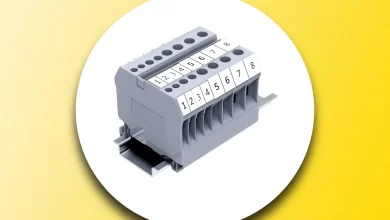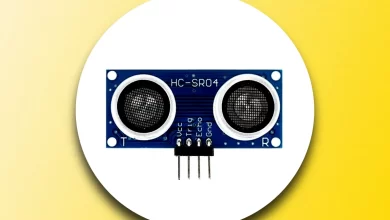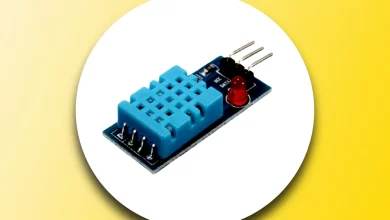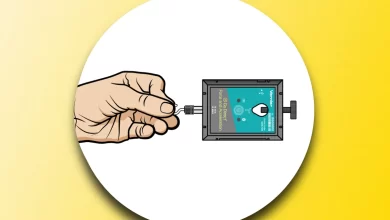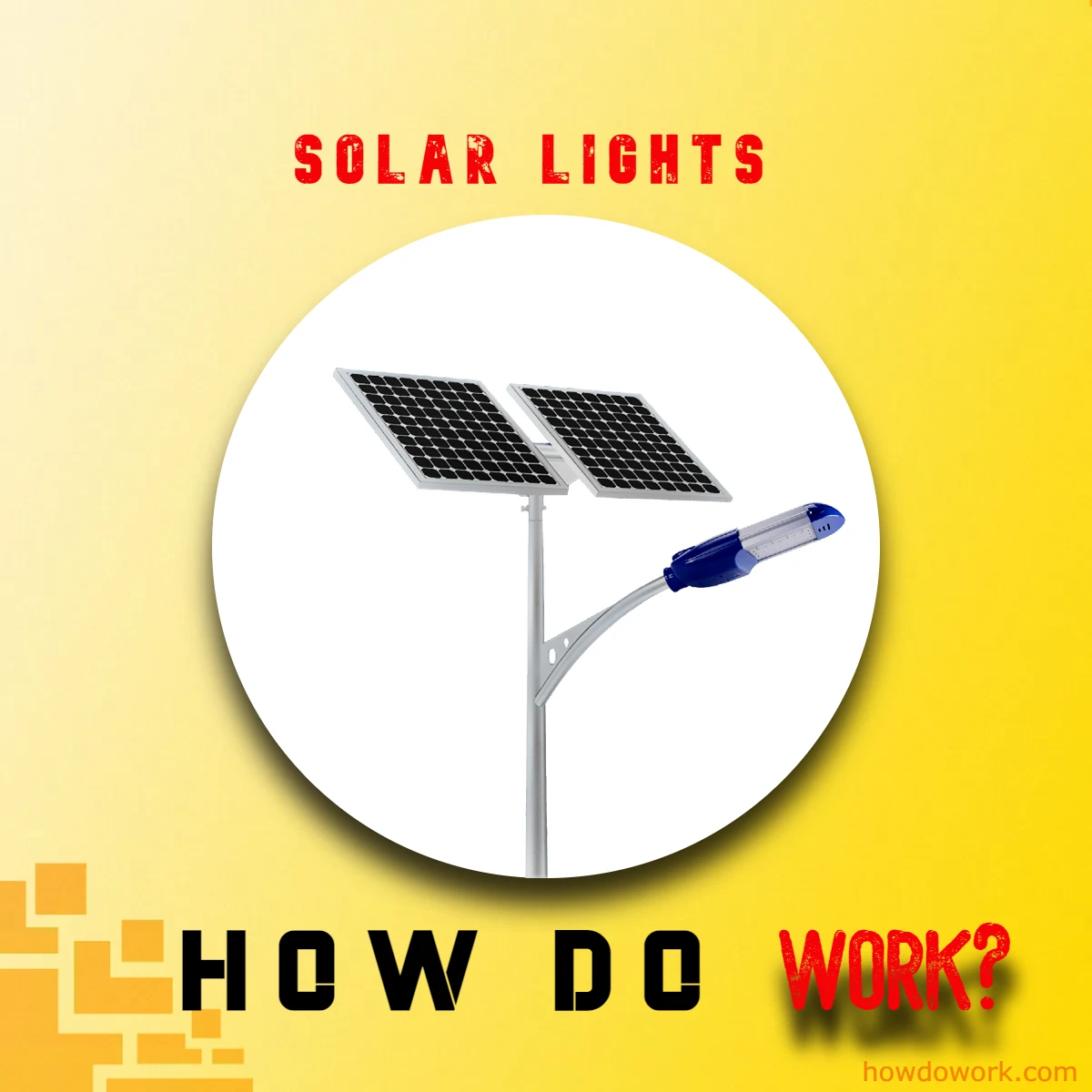
Solar lights operate by harnessing sunlight through solar panels, which contain semiconductor cells. When sunlight strikes these cells, it initiates the photovoltaic effect, causing the release of electrons and generating a direct current (DC). This electricity is stored in rechargeable batteries. As daylight wanes, a controller manages the flow of electricity from the battery to energy-efficient LED lights, illuminating the surroundings. Solar lights are a sustainable lighting solution that not only reduces energy costs but also lessens environmental impact, making them a key player in the shift toward greener technology.
| Aspect | Traditional Solar Lights | Advanced Solar Lights |
|---|---|---|
| Solar Panel Efficiency | Standard solar panels with lower efficiency. | Triple-junction solar cells with high efficiency, capturing a broader spectrum of sunlight. |
| Smart Technology Integration | Basic functionality with no connectivity. | IoT integration allows remote control and motion sensing. |
| Motion Sensing | Typically lacks advanced motion sensors. | Utilizes advanced sensors to distinguish between humans, animals, and objects. |
| Adaptive Brightness | Fixed brightness levels. | Adaptive brightness adjusts light output based on conditions. |
| Aesthetic Considerations | Standard design with limited emphasis on aesthetics. | Transparent solar panels and sustainable materials for a sleek and eco-friendly appearance. |
| Sustainability Features | Limited use of recycled or biodegradable materials. | Incorporates recycled materials and biodegradable components, following sustainable design principles. |
| Integration with Renewable Energy | Lacks hybrid systems. | Some models integrate with wind or kinetic energy for continuous power supply. |
| Government Incentives | Not necessarily aligned with government incentives for renewable energy. | Aligns with government incentives and rebates to promote sustainable practices. |
| Community Projects | Not typically used in community projects. | Used in community projects to provide lighting in remote areas, promoting safety and sustainability. |
| Overall Environmental Impact | Conventional environmental impact. | Strives for a reduced carbon footprint and a circular economy approach. |
| Technology Advancements | Conventional technology with limited innovation. | Utilizes the latest advancements in solar cell technology and IoT connectivity. |
| User Experience | Basic functionality with minimal user interaction. | Enhanced user experience with remote control and automation. |
Contents
- What are the solar lights work?
- Understanding Solar Lights
- The Dance of Solar Lights: How They Work at Night?
- The Benefits of Solar-Powered Illumination
- Types of Solar Lights
- Tips for Optimal Solar Light Performance
- Advanced Solar Light Innovations
- Solar Light Components
- Solar Light Installation: Where and How?
- Troubleshooting Solar Light Issues
- Solar Lights for Every Occasion
- The Future of Solar Lights
- FAQs
What are the solar lights work?
In the ever-evolving landscape of eco-conscious technology, one question stands as a beacon of curiosity: “What are solar lights, and how do they work?” As we embark on this enlightening expedition, we shall unravel the intricate mechanisms that underpin these ingenious devices. Solar lights, in their diverse manifestations, have transcended the realm of mere outdoor fixtures; they now symbolize the harmonious blend of cutting-edge technology and environmental sustainability.
Solar lights derive their brilliance from a combination of sophisticated technology and nature’s boundless energy source: the sun. At the heart of these luminous marvels, solar panels composed of advanced photovoltaic materials harness sunlight and initiate the photovoltaic effect, a process where photons stimulate the release of electrons from semiconductor cells. This generates a direct current (DC) that is then stored in rechargeable batteries. As dusk descends, a controller, acting as the orchestra conductor, orchestrates the flow of electricity from the battery to power energy-efficient LED lights, painting the night with a radiant glow.
Understanding Solar Lights
Solar Panels: Harvesting the Sun’s Energy
At the heart of every solar light, there lies a marvel of modern technology: the solar panel. This unassuming component is the true hero, converting sunlight into electricity. Imagine it as a tiny, sun-loving powerhouse.
When sunlight kisses the surface of the solar panel, a magical transformation begins. The solar panel consists of countless tiny cells made of semiconductors, usually silicon. These cells have two layers with different electron configurations. When sunlight particles, known as photons, strike the panel, they dislodge electrons from their atoms, creating an electric current. This process is what we refer to as the photovoltaic effect – a name that sounds as marvelous as the phenomenon itself.
The generated electricity is in the form of direct current (DC). It’s worth noting that the amount of electricity produced depends on various factors, including the intensity of sunlight and the size and efficiency of the solar panel. So, a larger, more efficient panel will generate more power.
Battery: Storing Sunlight for the Night
Now that we’ve captured the sun’s energy, what do we do with it, especially when the sun bids us farewell for the night? This is where the battery comes into play. Picture the battery as a reservoir, storing the harvested energy until it’s needed.
These batteries are typically rechargeable, most commonly lead-acid or lithium-ion. They ensure that the solar lights can continue to shine even during the darkest hours, making them reliable sources of illumination for your outdoor spaces.
Controller: The Brain Behind the Operation
Think of the controller as the conductor of an orchestra. It orchestrates the flow of electricity from the solar panel to the battery and ultimately to the light source. This clever device prevents overcharging the battery during the day and over-draining it at night, ensuring the system’s longevity.
The Dance of Solar Lights: How They Work at Night?
LED Lights: Shining Bright
As the sun sets and the solar panel takes a rest, it’s time for the LED (Light Emitting Diode) lights to step into the spotlight. LED lights have become the darling of the lighting world, and for good reason. They are energy-efficient, long-lasting, and emit a crisp, bright light that beautifully illuminates your surroundings.
The controller, which we mentioned earlier, detects the diminishing light levels and signals the LEDs to light up. These energy-sipping bulbs convert electricity from the battery into visible light with remarkable efficiency. This is the moment when your garden, walkway, or patio comes alive with the gentle glow of solar-powered radiance.
The Photocell: A Nighttime Sentinel
But wait, there’s more to the story. Solar lights have a built-in sentinel known as a photocell, also called a light sensor. This tiny but intelligent component senses the onset of darkness and acts as a trigger for your solar lights to spring to life. Conversely, when daylight returns, the photocell tells the lights it’s time to sleep and conserve energy for another night.
The Benefits of Solar-Powered Illumination
Eco-Friendly Brilliance
Now that we’ve demystified the workings of solar lights, let’s delve into the many advantages they offer.
- Environmentally Friendly: Solar lights harness the power of the sun, a renewable resource, reducing our dependence on fossil fuels and decreasing our carbon footprint.
- Cost-Efficient: Once you’ve invested in solar lights, the sun provides the energy for free. There are no electricity bills to worry about, making solar lights a cost-effective choice in the long run.
- Low Maintenance: Solar lights are remarkably low-maintenance. With no wires to deal with and minimal upkeep required, they’re a hassle-free way to light up your outdoor spaces.
- Versatility: Solar lights come in a variety of styles and designs, making them suitable for various applications – from accentuating your garden’s beauty to lighting up pathways for safety.
- Safety: Solar lights can improve safety around your property by illuminating pathways, driveways, and dark corners, reducing the risk of accidents.
Types of Solar Lights
1. Solar Garden Lights
These enchanting lights transform your garden into a magical wonderland, creating a cozy ambiance for your outdoor gatherings. They are often available in various shapes and designs, from delicate fairy lights to charming lanterns.
| Solar Garden Lights | Description |
|---|---|
| Path Lights | Illuminate pathways and driveways with subtle, ground-level lighting. |
| String Lights | Create a whimsical atmosphere by stringing lights through trees or along fences. |
| Lanterns | Add a touch of elegance with hanging or tabletop lanterns. |
| Spotlights | Highlight specific features like statues, plants, or architectural details. |
2. Solar Security Lights
For added safety and security, these lights automatically brighten when motion is detected. They are ideal for illuminating dark corners, driveways, and entrances.
| Solar Security Lights | Description |
|---|---|
| Motion-Activated Floodlights | Provide intense illumination when motion is sensed, discouraging intruders. |
| Wall-Mounted Lights | Install these on the exterior walls of your home for dependable security. |
3. Solar String Lights
String lights have a charming and festive quality, making them perfect for outdoor parties, weddings, or simply adding a touch of whimsy to your outdoor space.
| Solar String Lights | Description |
|---|---|
| Fairy Lights | Delicate and enchanting, these lights create a magical atmosphere. |
| Globe Lights | Emit a warm, inviting glow that complements various outdoor settings. |
Tips for Optimal Solar Light Performance
- Placement Matters: Ensure that your solar panel is exposed to direct sunlight for the majority of the day. Avoid shading from trees or buildings that can hinder energy production.
- Keep It Clean: Periodically clean the solar panel to remove dirt, dust, and debris that can block sunlight.
- Battery Maintenance: If your solar lights start to dim or not work at all, it may be time to replace the rechargeable batteries. Regularly check and replace them as needed.
- Switch Off When Not Needed: Some solar lights come with manual on/off switches. If you’re going away or don’t need the lights for an extended period, switch them off to conserve energy.
- Choose Quality: Invest in high-quality solar lights with efficient panels and durable construction to ensure longevity.
Advanced Solar Light Innovations
In our quest to delve deeper into the world of solar lights, we’ll now explore the cutting-edge innovations and emerging trends that are shaping the future of solar lighting technology. These advancements promise to make solar lights even more efficient, versatile, and environmentally friendly.
1. Solar Light Efficiency Boosters
Triple-Junction Solar Cells: One of the latest breakthroughs in solar panel technology is the use of triple-junction solar cells. These cells have multiple layers that can capture a broader spectrum of sunlight, including infrared and ultraviolet rays. This innovation significantly increases the efficiency of solar panels, allowing for more energy production from the same amount of sunlight.
Transparent Solar Panels: Researchers are working on transparent solar panels that can be integrated into windows and other surfaces. This means you could potentially turn your entire building into a solar power generator while maintaining natural light indoors.
Quantum Dots: Quantum dots are tiny semiconductor particles that can be used to enhance the efficiency of solar panels. They can be tuned to absorb specific wavelengths of light, making solar panels more effective at capturing sunlight.
2. Smart Solar Lights
IoT Integration: The Internet of Things (IoT) is making its way into the world of solar lighting. Smart solar lights can be connected to a central control system, allowing you to adjust brightness levels, set timers, and monitor energy usage remotely through a smartphone app or computer interface.
Motion Sensing Technology: Advanced motion sensors are being incorporated into solar lights, making them more responsive to human presence. These sensors can distinguish between humans, animals, and objects, ensuring that the lights only activate when needed.
Adaptive Brightness: Some solar lights now come with adaptive brightness settings that adjust the light output based on the surrounding conditions. This not only saves energy but also provides the right amount of light for the situation.
3. Sustainable Materials
Recycled Materials: Many manufacturers are adopting sustainable practices by using recycled materials in the construction of solar lights. This not only reduces waste but also lowers the carbon footprint of the production process.
Biodegradable Components: Some forward-thinking companies are developing solar lights with biodegradable components. These lights are designed to break down naturally at the end of their lifecycle, further reducing their environmental impact.
Cradle-to-Cradle Design: Cradle-to-cradle design principles focus on creating products that can be completely recycled or repurposed at the end of their useful life. Solar lights following this approach contribute to a circular economy.
4. Energy Storage Innovations
Advanced Battery Chemistries: Lithium-ion batteries have been the standard for solar lights, but researchers are exploring alternative battery chemistries that offer even higher energy density, longer lifespans, and faster charging capabilities.
Super Capacitors: Some solar lights are beginning to use supercapacitors instead of traditional batteries. These supercapacitors can charge and discharge rapidly, making them ideal for solar lights that need to respond quickly to changing conditions.
Hybrid Systems: Combining solar panels with other renewable energy sources, such as wind or kinetic energy, is a trend on the rise. These hybrid systems ensure a continuous power supply, even during extended periods of low sunlight.
5. Integration with Sustainable Landscaping
Green Roofs and Solar Lights: Green roofs, covered in vegetation, are becoming increasingly popular. Solar lights can be integrated into the design of these roofs, providing illumination for outdoor spaces while contributing to energy efficiency.
Solar-Powered Fountains and Water Features: Solar lights are being used to power water features like fountains and ponds. This not only adds a decorative element to outdoor spaces but also conserves energy by utilizing sunlight.
Solar Light Sculptures: Artists and designers are creating stunning sculptures and installations that incorporate solar lights. These art pieces not only captivate with their beauty but also showcase the harmony between technology and art.
6. Solar Light Education and Advocacy
Environmental Awareness: With the growing concern for environmental issues, there’s a greater emphasis on educating the public about the benefits of solar lighting. Advocacy groups and organizations are actively promoting the adoption of solar lights to reduce carbon emissions and combat climate change.
Government Incentives: Many governments around the world are offering incentives and rebates to encourage the use of solar lights and other renewable energy technologies. These incentives can make solar lighting more accessible and affordable for homeowners and businesses.
Community Projects: Solar lights are being used in community projects to provide lighting in remote and underserved areas that lack access to electricity. These projects not only improve safety but also empower communities by providing a sustainable source of light.
Solar Light Components
Solar Light Fixture: This is the outer shell that houses all the components, including the LED lights, solar panel, battery, and controller. It also provides protection from the elements, ensuring the longevity of your solar light.
LED Light: Light Emitting Diodes (LEDs) are the heart of your solar light’s illumination system. They come in various colors and brightness levels, allowing you to customize the ambiance of your outdoor space. LED lights are exceptionally energy-efficient, converting a high percentage of electricity into visible light.
Solar Panel: The efficiency of your solar panel plays a crucial role in how well your solar light functions. High-quality solar panels can capture more sunlight and convert it into electricity with greater efficiency. Amorphous, monocrystalline, and polycrystalline panels are the common types you’ll encounter, each with its own advantages.
Battery: Rechargeable batteries, either lead-acid or lithium-ion, store the solar energy generated during the day. The capacity of the battery determines how long your solar light can shine at night. Larger batteries offer extended runtime.
Controller (Charge Controller): The charge controller ensures that your battery doesn’t overcharge during the day or discharge too deeply at night. It’s a crucial component for the longevity of your solar light system.
Solar Light Installation: Where and How?
Now that you’re well-versed in the inner workings of solar lights, let’s talk about the nitty-gritty of installing them.
Step 1: Choose the Right Location
Selecting the right spot for your solar lights is paramount. Here are some pointers:
- Sunlight Exposure: Ensure that the chosen location receives direct sunlight for most of the day. This allows the solar panel to generate the maximum amount of energy.
- Aesthetic Considerations: Think about how the solar lights will look in your outdoor space. Consider both their daytime appearance and the nighttime ambiance they’ll create.
Step 2: Assemble Your Solar Lights
Most solar lights come with simple assembly instructions. Usually, it involves attaching the fixture to a stake or a wall mount. Follow the manufacturer’s guidelines carefully.
Step 3: Install the Solar Lights
Now, it’s time to place your solar lights:
- Pathway Lights: These are typically staked into the ground along pathways or garden borders.
- Wall-Mounted Lights: Fix them securely to the exterior walls of your home or other structures.
- String Lights: String them through trees, along fences, or across pergolas for a charming effect.
Step 4: Test and Adjust
Before leaving your solar lights to work their magic, test them to ensure they function properly. Some lights have an on/off switch; make sure it’s in the “on” position. Allow the solar panel to charge for a day or two to optimize performance.
Troubleshooting Solar Light Issues
While solar lights are generally trouble-free, occasional issues may arise. Here are some common problems and their solutions:
Dim Light: If your solar lights are dim, it could be due to a few factors. First, ensure they receive adequate sunlight during the day. If the panel is dirty, clean it. If the battery is old, consider replacing it.
Short Runtime: If your lights don’t last as long as expected at night, check the battery’s capacity. Upgrading to a larger battery may solve the issue. Also, make sure there are no obstructions shading the solar panel during the day.
Lights Not Turning On: If your lights don’t turn on at night, confirm that the photocell (light sensor) is not obstructed. If it’s clear, the problem might be with the LED bulb or the controller. Replacing these components could resolve the issue.
Intermittent Operation: If your solar lights work inconsistently, it may be due to loose connections or wiring issues. Ensure all connections are secure and that there are no damaged wires.
Solar Lights for Every Occasion
Solar lights aren’t just for practical use; they can also add a touch of magic to special occasions. Here are a few ideas for incorporating solar lights into your celebrations:
1. Wedding Decor
Imagine an outdoor wedding reception bathed in the soft glow of solar string lights hung from tree branches or wrapped around a gazebo. It creates a romantic and enchanting atmosphere that’s perfect for the occasion.
2. Festive Holidays
During the holiday season, solar-powered Christmas lights are a sustainable and cost-effective way to adorn your home. You can decorate your trees, porch, and roof with these energy-efficient lights.
3. Evening Garden Parties
Host delightful garden parties under the stars with solar garden lights. They add an elegant touch and ensure your guests can navigate your garden safely in the evening.
4. Camping Adventures
For the adventurers at heart, portable solar lanterns and flashlights are invaluable companions. Charge them during the day and use them to light up your campsite at night.
The Future of Solar Lights
As technology continues to advance, the future of solar lights looks even brighter. Researchers and manufacturers are constantly working on improving the efficiency of solar panels, batteries, and LEDs. This means we can expect solar lights to become even more energy-efficient and capable of longer runtimes.
Additionally, smart solar lights are on the horizon. These lights will be equipped with sensors and connectivity features, allowing you to control them remotely via your smartphone. Imagine adjusting the brightness, color, and timing of your outdoor lights with a few taps on your phone.
FAQs
Solar lights work at night by utilizing the stored energy from the sun during the day. When the sun sets, a controller detects the diminishing light levels and triggers energy-efficient LED lights to illuminate, powered by the electricity stored in rechargeable batteries.
The photovoltaic effect in solar lights refers to the process by which semiconductor cells in the solar panel convert sunlight into electricity. When sunlight particles, known as photons, strike the panel, they dislodge electrons from atoms within the cells, generating a direct current (DC) that can be used to power the lights.
The runtime of solar lights at night depends on various factors, including the size and efficiency of the solar panel, the capacity of the battery, and the intensity of sunlight during the day. On average, well-designed solar lights can stay illuminated for 8 to 12 hours after a full day of charging.
Yes, there are various types of solar lights designed for different purposes. Common types include solar garden lights, solar security lights, solar string lights, and solar pathway lights. Each type is tailored to specific applications, such as accentuating gardens, enhancing security, or creating decorative lighting.
To optimize the performance of your solar lights, ensure they are placed in an area with direct sunlight exposure, clean the solar panel periodically to remove dust and debris, replace rechargeable batteries as needed, and choose high-quality solar lights with efficient panels and controllers for longer life and better performance.
Read More:
